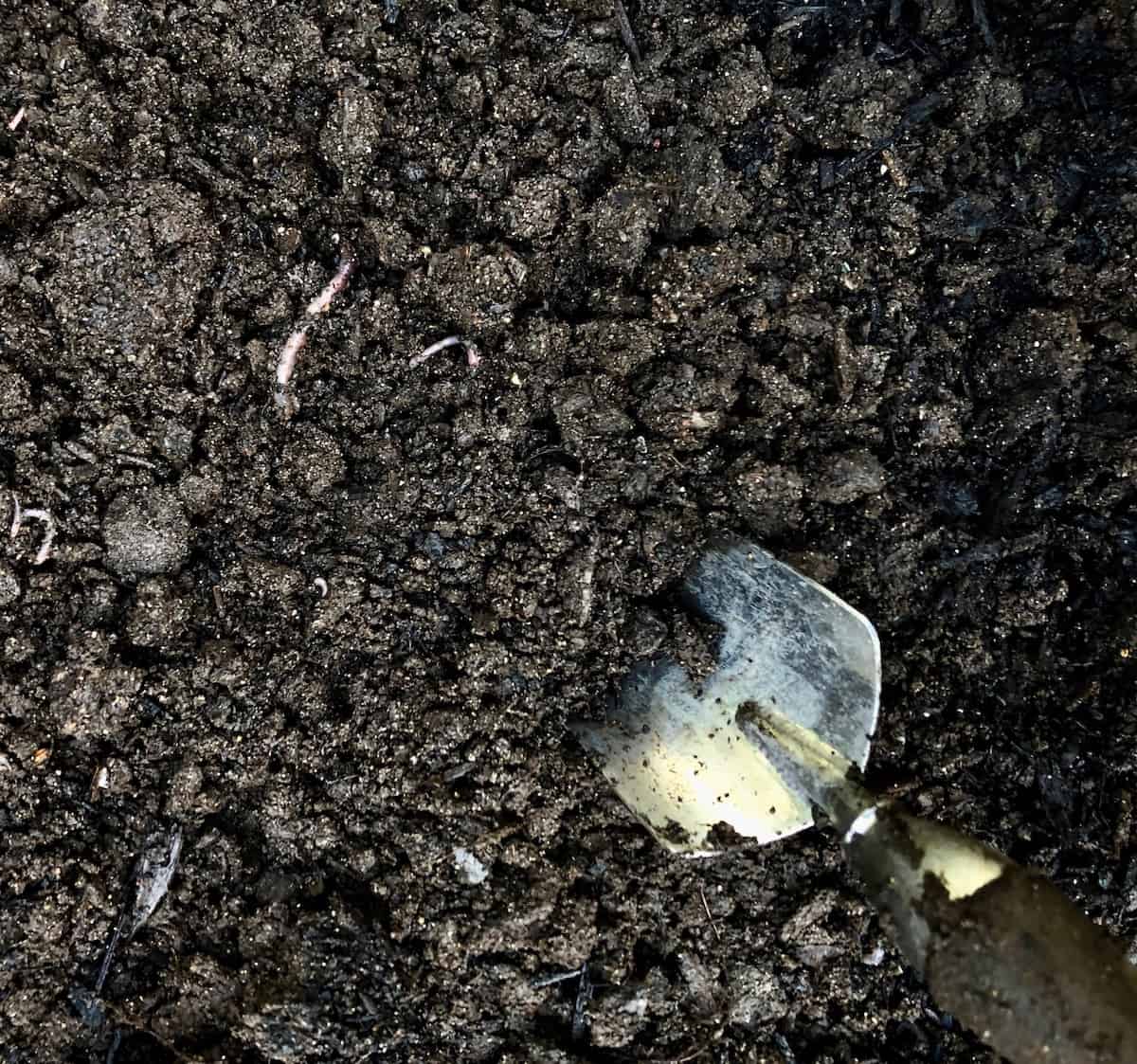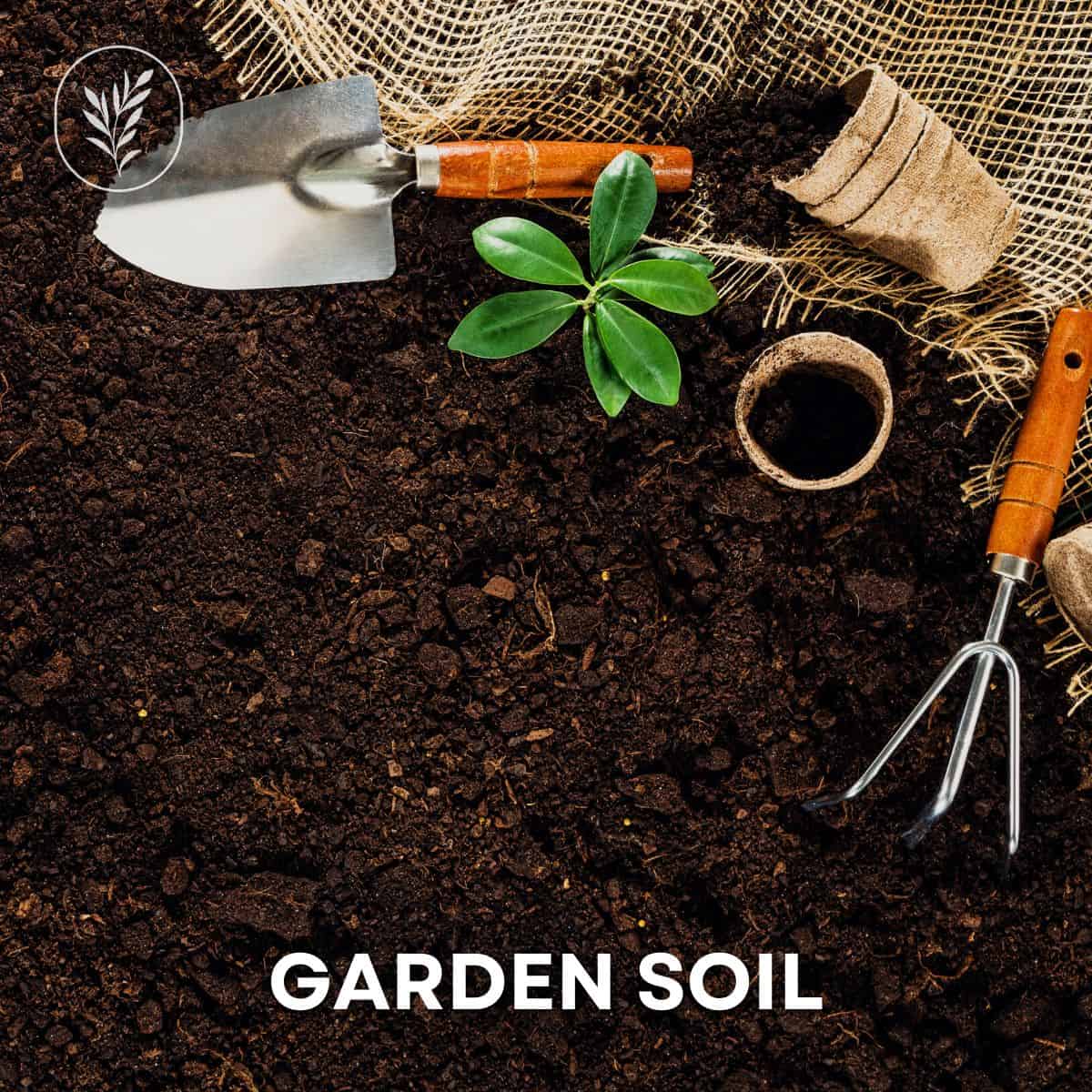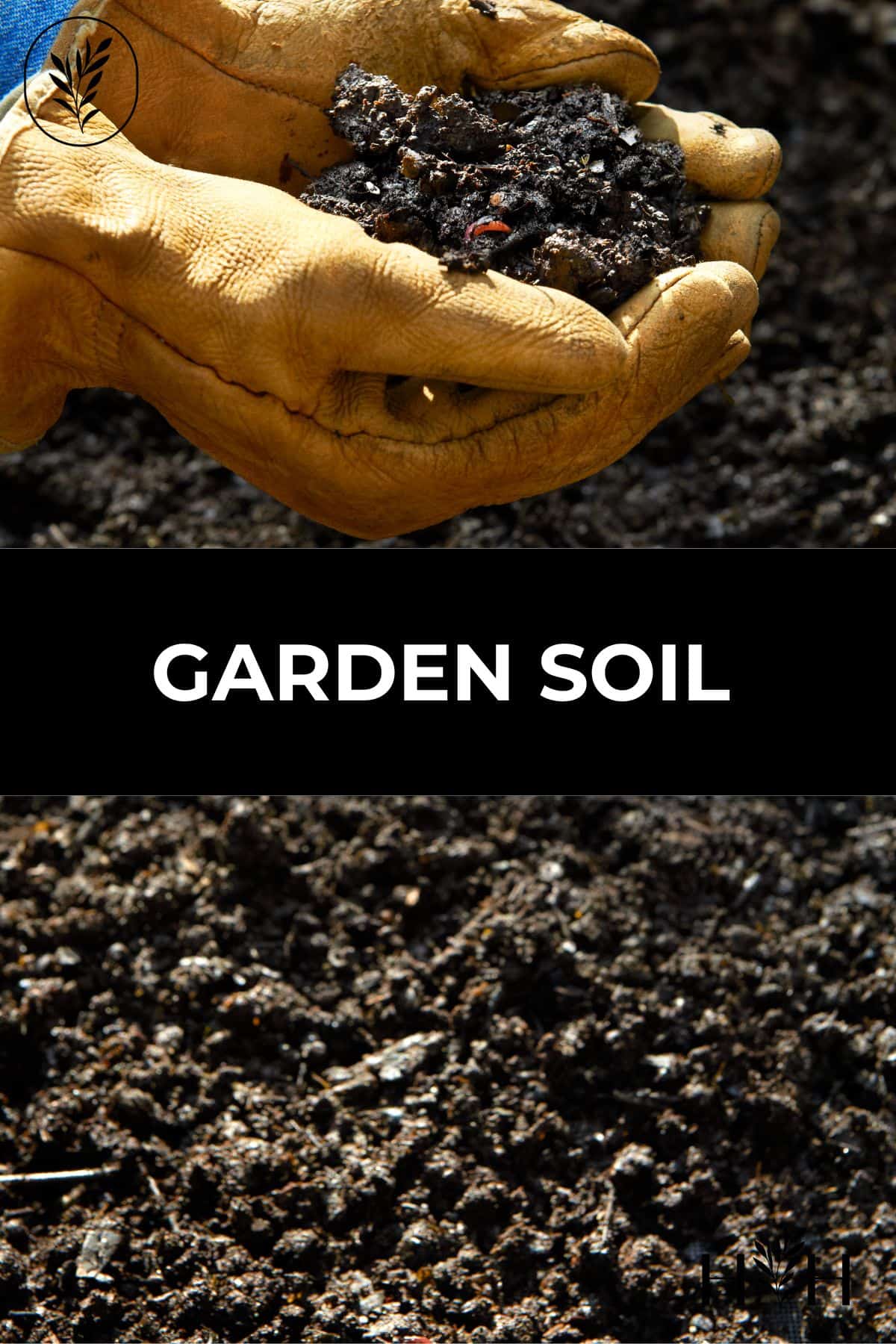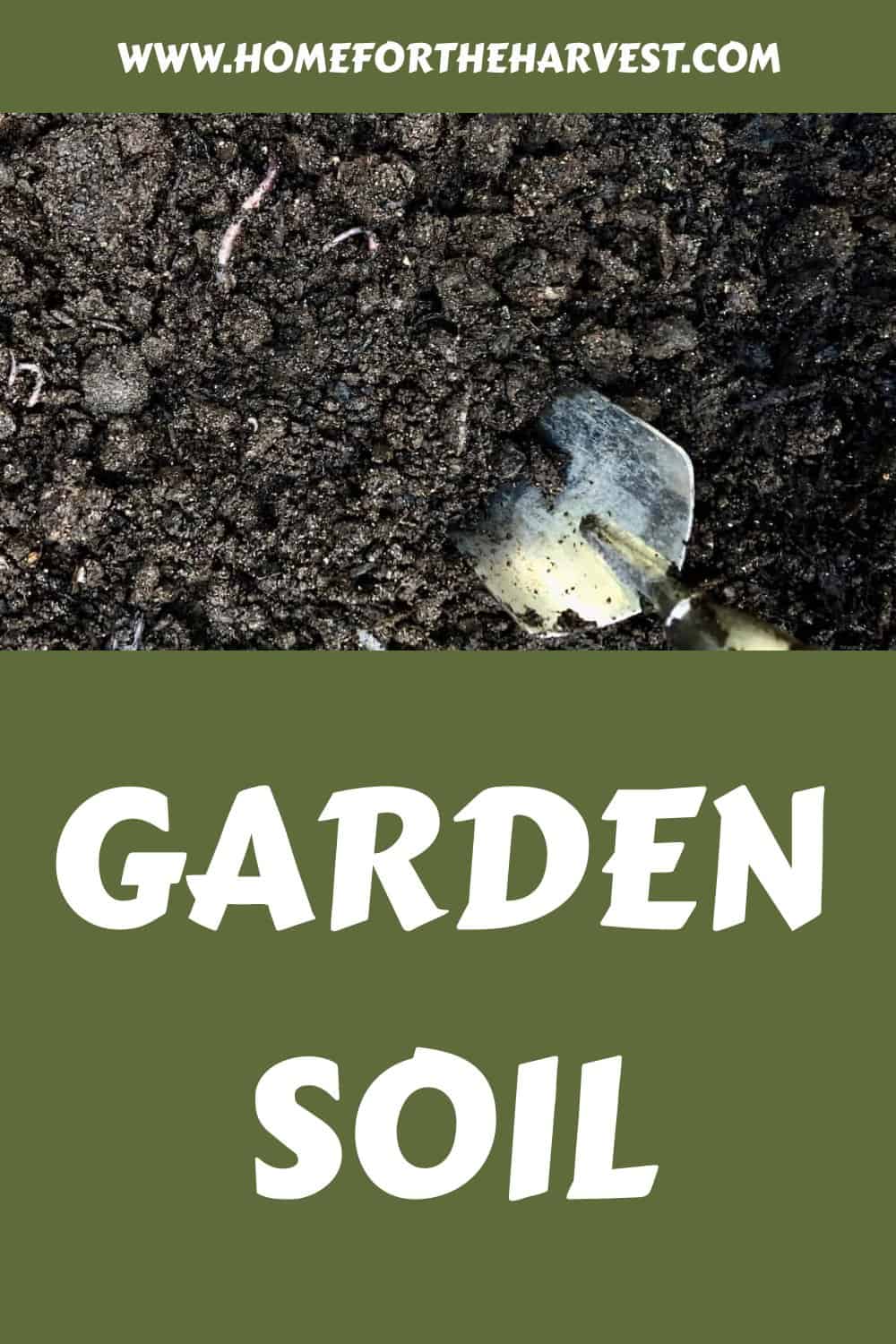Great garden soil is generally deep, porous, and loamy. It holds enough moisture and air to support plant roots while allowing excess water to drain away. Fertile soil is rich in nutrients, free from harmful contaminants, and alive with healthy soil microorganisms, critters, and earthworms. Gardens with these soil conditions tend to be wonderfully productive.
Garden soil basics
Garden soil is a mixture of mineral particles, air, water, organic matter, and living organisms. Great garden soil supports plant growth both by providing a stable structural base but also by making key plant inputs like water, oxygen, and nutrients available to the roots of plants. Soil is also a habitat for many other living organisms, acts as nature’s compost pile, and even as a water filter.
What is garden soil made of?
Garden soil is made of the following components:
Mineral Particles: Mineral particles are tiny bits of rock that have been weathered off larger rocks. Rock-based particles in soil are generally characterized by size into three categories: sand, silt, and clay. Grains of sand are visible to the human eye, but clay particles are too small to see. Mineral particles generally make up about half the volume of garden soil (although soils vary widely).
Air: Air content is a key component of garden soil. Tiny air pockets give the soil porosity, meaning it is full of little holes (also called pores or voids). Air pockets in the soil matrix allow plant roots to access the oxygen they need to live. They also provide space for water, plant roots, and various soil creatures. A wonderfully light garden soil can be about half solid particles and half empty space. If the soil had the air pockets squished out of it, it would be hard as a rock!
Water: Water is another critical input for healthy plants. The empty space between mineral particles and organics is not just filled with air – it also hopefully contains some water. In a fully saturated soil, all of the empty space is full of water (which displaces the air). Water content in soil varies widely, changing throughout the season and even throughout the day.
“A good loam soil is about 50 percent soil particles and 50 percent pore space filled with air and water (Brady 1996).”
Soil Quality Information, by Lynn Kime, Pennsylvania State University Extension
Organic Matter: Organic matter is the part of the soil made of decaying organisms. Plants, animals, fungi, bacteria, and members of the other kingdoms of life all eventually die and decompose to become part of the soil. If I were looking at the results of a soil test, I’d be happy to see an organic matter content of 5-10 percent. Garden soil with an organic matter content outside this range can still support plant life, but it may require a little more attention.
Living Organisms: A portion of soil is alive! Soil is home to a fascinating number of single-celled microorganisms like bacteria and also to larger multicellular creatures like small plants, animals, and fungi. These living creatures are what separate thriving garden soil from an inert, laboratory-growing medium.
Other Stuff in Garden Soil: Of course, there is lots of other stuff that can make its way into garden soil. I routinely find small toy cars and plastic tags from long-dead bedding plants. Soil may also contain agricultural chemicals. There could be old coins that your metal-detecting family members can recover. Who knows! Soil is incredibly variable.
“All living things consist of atoms of the chemical elements. The ultimate reservoirs of these elements on Earth are the rocks, the oceans, and the atmosphere. Rocks as they weather to soil; the oceans as they furnish water through the atmosphere to lakes, streams, and soils; and the atmosphere itself – these simple compounds, aggregates, solutions, and gases are the ores that the living world mines for the elements that go into the making of palm and pine, rice and redwood, mice and men.”
Mineral Nutrition of Plants: Principles and Perspectives, by Emanuel Epstein and Arnold J. Bloom
Where does garden soil come from?
Garden soil is sourced from naturally occurring topsoil or can be created by mixing together various ingredients. Store-bought garden soil is notorious for incomplete labeling. Always check with your garden soil supplier so you know exactly what you’re getting!
A relatively undisturbed patch of ground in your backyard will generally have some depth of naturally occurring topsoil. Under the grass or mulch, there will be some portion of the soil that not only contains tiny rocks but also has signs of life. A depth of 6-8″ of topsoil is a good start for many residential yards.
If you’re bringing garden soil into your property, it has either been stripped off the top of another piece of land or, more commonly, mixed up from various ingredients in a bulk garden soil production facility. There are obviously pros and cons to both sources of garden soil.
Naturally occurring topsoil is strip-mined off of the top of an undeveloped piece of property. This often occurs at new building sites, where the entire site is stripped of organics as they can make it hard to run machinery. Without a garden soil test, it’s pretty much impossible to know exactly what you’re getting.
Manufactured garden soil is mixed up from materials like sand, clay, composted manure, composted sawdust, and other various byproducts of industry. There is an endless variety of things that go into manufactured garden soil. You might be getting grain silage, and you might be getting human sewage sludge. ASK FOR THE INGREDIENTS.
The best garden soil
The best garden soil is generally described as follows:
- Deep: has enough depth to house the roots of the intended crops
- Loamy: has a nice mix of mineral particles, generally with a good amount of sand and smaller amounts of silt and clay
- Porous: holds enough air to provide plant roots with oxygen and a stable foundation
- Well-Draining: structured to retain the right amount of water so that roots can access both moisture and oxygen
- Fertile: contains the right amount of the nutrients plants source from soil minerals and organic matter
- Pure: free from harmful chemicals, toxins, weeds, pathogens, and pests
- Biologically Active: is home to a thriving ecosystem.
Don’t underestimate the importance of healthy garden soil. This applies to all areas of the home landscape, from flower beds to the vegetable garden and even the lawn.
Soil that is great for growing plants is referred to as soil with good “tilth”. Soil with good tilth, or that’s great for gardening, has just the right amount of pore space for air and water and also holds just the right amount of water. It’ll also be rich in nutrients for the plants and free from harmful contaminants (and hopefully from weeds!).
For more of an understanding of high-quality soil, check out these quotes from gardening experts describing great garden soil:
“The best soil for a vegetable and fruit garden is deep, fertile, and well-drained.”
Backyard Bounty: The Complete Guide to Year-Round Organic Gardening in the Pacific Northwest, by Linda Glikeson
“Ideally, a “good horticultural soil” contains 50% solid material (mostly mineral soil plus 5-10% organic matter) and 50% pore space. At any given time, that pore space is occupied by both air and water.”
Soil and Plant Nutrition: A Gardener’s Perspective, by Dr. Lois Berg Stack, Extension Professor, The University of Maine
Soil scientists call soils with good structure “granular” or “crumb” type soils. These soils are loose and fluffy. Generally they are high in organic matter and have large soil aggregates.
Soil Quality Information, by Lynn Kime, Pennsylvania State University Extension
“Loam soil, which is often considered the ideal, combines the main benefits of clay, sandy and silty soils. It has good fertility and an ability to retain some moisture as well as drain well. Loamy soil is easier to cultivate. The addition of organic matter maintains its fertility and open texture, for optimum root penetration.”
Royal Horticultural Society Small Garden Handbook: Making the Most of Your Outdoor Space, by Andrew Wilson
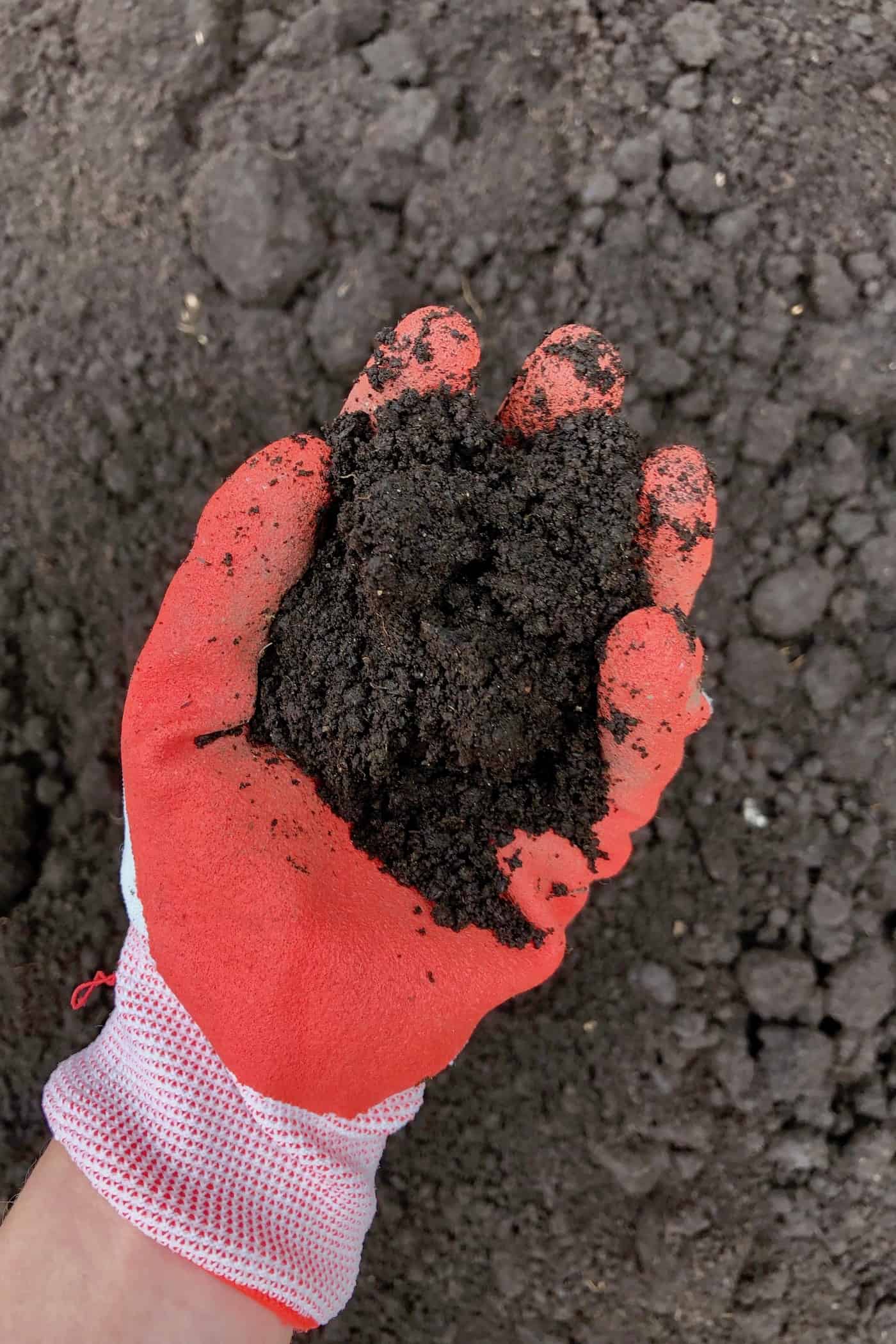
Detailed characteristics of garden soil
Soil fertility is affected by all features necessary for plant growth. The type of soil, its structure, and the nutrients it contains are all key to the health of the plants that live in it.
Soil texture
Soil texture is a method of classifying soils based on the sizes of their mineral particles. Most of the volume of garden soil comes from rocks. Rocks are weathered down into tiny pieces over millions of years. These tiny bits of rocks are the main ingredient in garden soil. These tiny rocks are the mineral particles in garden soil.
Mineral particles are classified by their size to help us determine soil texture and type. The largest soil mineral particles are sand. The smallest soil mineral particles are clay. Silt particles are somewhere in the middle. These three sizes of soil mineral particles – sand, silt, and clay – often occur in a mixture of all three size categories.
The proportions of sand, silt, and clay in soil are what determine soil type. Once the particle size distribution is understood, the soil can be classified into one of twelve categories. The texture categories of soil are represented using the Soil Texture Triangle.
Different soil textures have different implications for plant life. A heavy clay soil may have lots of nutrients for plants but not nearly enough air particles for healthy roots. A loose sandy soil may have enough air for healthy roots but be unable to hold much-needed nutrients for any length of time.
Soil structure
The structure of the soil is the way that its particles are put together. Soil is a mixture of solids and empty space between these solids. Garden soil needs both of these components to support plant life. The configuration of solid particles with gas and liquid between them is actually a very important factor in garden soil.
Over time, the soil becomes saturated with water, dries out, freezes, thaws, is walked on, and is shifted around by earthworms and other creatures. This mechanical activity pushes soil particles together into clumps, known as soil aggregates. Residues from living things give soil aggregates a boost of cohesion with a bit of natural “glue.”
The roots of plants require access to both air and water. Plants need adequate air voids in the soil matrix and generally also need water to drain well through these voids. Unless the soil is fully saturated, it tends to hold mainly air in the larger pore spaces and mainly water in the smaller pore spaces. This type of soil creates a nice balance of well-drained and moisture-retaining characteristics.
In general, good garden soil has a balanced mix of particles and void space. The size of both the particles and the voids should also be varied. Nature creates soil with good structure with much greater efficiency than humans. Many gardeners are therefore moving away from deep soil tilling and choosing instead to encourage the natural subsurface ecosystem to develop its own structure.
“Tillage, falling raindrops and compaction are primarily responsible for destroying aggregates. As the cutting edge of a tillage implement is pulled through the soil, the shearing action at the point of contact breaks apart aggregates. If tillage is conducted at the same depth for several years, a tillage pan may develop. This is one form of compaction.”
Physical Properties of Soil and Soil Water – Soil Structure, University of Nebraska Cooperative Extension
Soil pH
Soil pH is a measurement of whether the soil matrix tends to produce a solution that is acidic or alkaline, as well as the strength of the acidity or alkalinity. All plants have a certain range of pH where they grow best. Some plants thrive in acidic soil while others prefer a bit of alkalinity.
The pH of the soil can correlate with the availability of specific nutrients. For instance, limestone parent rock can create alkaline soils which are naturally low in available phosphorus. Acidic soils are less friendly to some beneficial microorganisms that work to make soil nutrients available to plants.
Soil nutrients
Soil nutrient levels are an important component of plant health. Plants require various nutrients (in varying amounts) to grow normally. Garden soil naturally contains nutrients but may also be amended with nutrient-containing fertilizers. These nutrients are absorbed by the roots of plants and used in various biological processes.
“Nutrient availability from soils tends to be greatest early in the growing season when (1) warming of soils or the coming of rains brings a flush of nutrients into the rhizosphere, (2) microbes that compete with roots for soil nutrients are just beginning to recover from the dormancy of winter or the dry season, and (3) new plant roots explore virgin soil. Plants obtain a substantial portion of their mineral nutrients during this time.”
Mineral Nutrition of Plants: Principles and Perspectives, by Emanuel Epstein and Arnold J. Bloom
There are three key nutrients in the world of plant fertilizer: Nitrogen, Phosphorus, and Potassium. There are also a host of other nutrients that plants require, including things like Magnesium, Iron, and other familiar elements from the periodic table.
Each garden soil will have a naturally occurring amount of any given nutrient. This may or may not be adequate to support the type of plant you’d like to grow there. It’s important to get a soil test to understand the baseline nutrients in your soil and also to understand the nutrient needs of whatever it is you’re growing. You can even have the shoots of plants tested for nutrients, although this is less common in residential crop production.
“Optimal fertilizer management requires frequent testing of soil and crop nutrient levels (Westerman 1990). Soil tests are meant to provide an estimate of nutrient availability at a particular location.
Mineral Nutrition of Plants: Principles and Perspectives, by Emanuel Epstein and Arnold J. Bloom
Lastly, it should be noted that although plants need to take nutrients from the soil, they do so sustainably. Plants can’t just “use up” all the nitrogen in one spot and then hike over to a new patch of land to find some more (although I find it quite hilarious to picture that in my mind). Plants are one part of an incredibly complex ecosystem that thrives perfectly well on its own, as nature intended.
Soil life
Garden soil is a habitat for all manner of life forms, from single-celled microorganisms to wriggling earthworms. The plants, animals, bacteria, fungi, and other forms of life that make their home in the soil can work in collaboration with the crops we grow to produce stronger, more productive gardens. This ecosystem is often called the Soil-Food Web.
Some bacteria can literally absorb nitrogen from the air for plants to use. There are fungi that can help plants absorb increased amounts of water and nutrients. Earthworms create air voids and increase the drainage capacity of garden soil. There’s a lot to love about soil life!
Consider these fascinating descriptions of subsurface life:
“Think of the soil as a living, breathing, densely populated community of organisms (roots, fungi, bacteria, insects, mites, worms, and a lot else besides) living in a moist, dark world. Keeping this community happy, rich, and buys is the essence of organic gardening. If you can do that, you will reap the rewards of a thriving garden.”
Backyard Bounty: The Complete Guide to Year-Round Organic Gardening in the Pacific Northwest, by Linda Glikeson
Soil organic matter
Organic matter is the portion of soil that’s made of decomposing remains of living things. Organic matter in garden soil includes decaying bits of plants, animal remains, and animal waste products like manure. Soil life and its resulting organic matter differentiate healthy garden soil from a bag of plain rock dust. Many gardeners add organic matter to their soil by top-dressing it with an inch of homemade compost.
Organic matter is so important to garden soil because it helps create good soil structure. Organic matter from dead plants and animals helps soil clump together into aggregates. Water drains easily between aggregates, but the aggregates themselves include smaller voids that hold water well for plants. The organic matter also contributes plant nutrients, especially the ever-important nitrogen that plants love.
“Organic matter is a reservoir of certain plant nutrients, especially nitrogen, phosphorus, and sulfur. Many soils have 90 percent or more of their total nitrogen present in organic materials. The figures are smaller for phosphorus and sulfur, but are still significant.”
Physical Properties of Soil and Soil Water – Soil Organic Matter, University of Nebraska Cooperative Extension
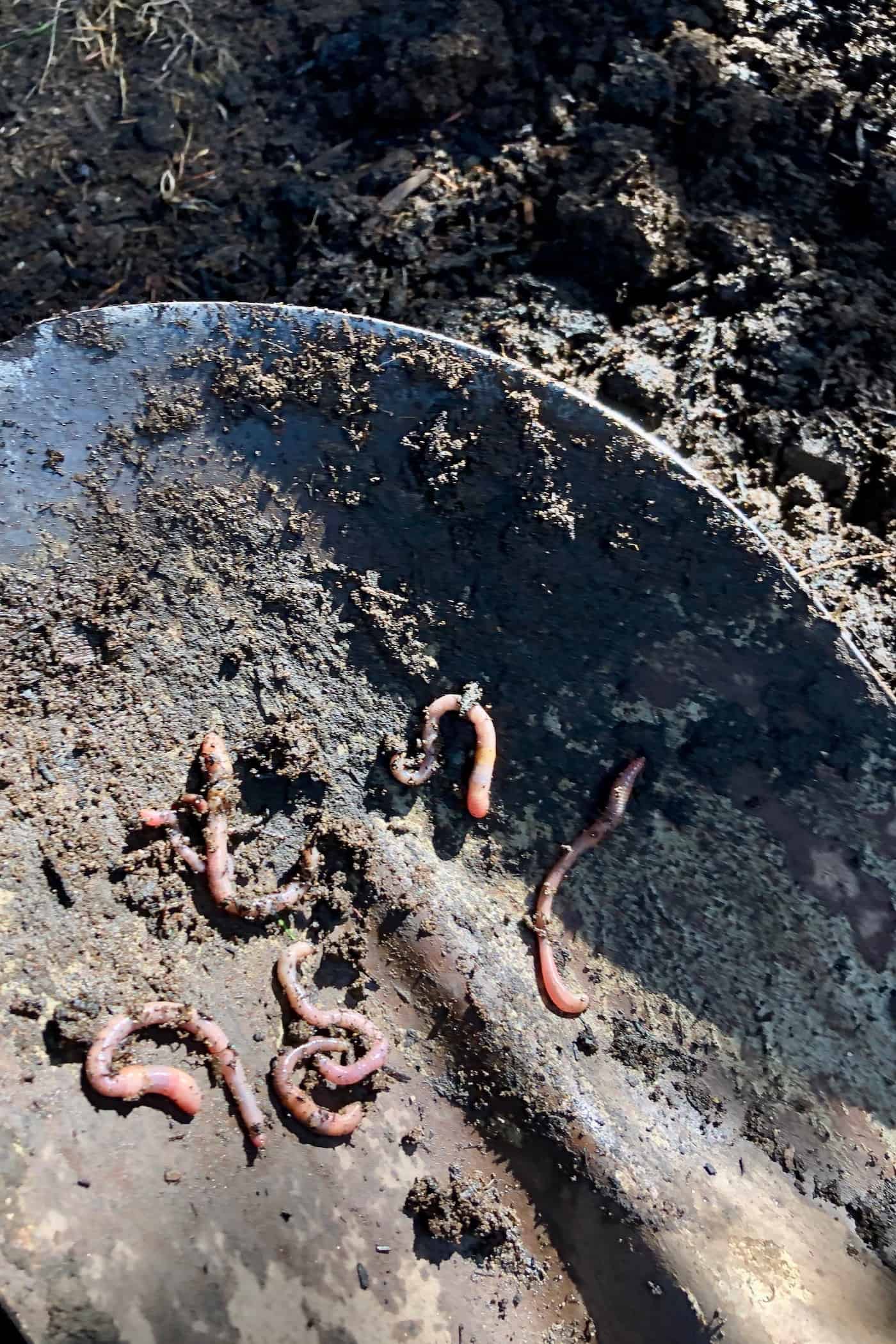
Getting to know the soil in your garden
Getting to know the soil in your own garden is a key step to becoming a seasoned gardener. The more time you spend out in your garden, the more you’ll get to know the soil. That being said, there are a few ways to get a head start on learning about your garden soil.
A gardener’s soil test pit
The easiest way to start learning about your soil is to head out into the yard with a shovel! There are of course a host of safety considerations for digging in your backyard, many of which vary regionally and in each unique situation. Consider and address hazards prior to digging in your garden (including things like body positioning, protective gear, and underground utilities). Your local university extension office or agricultural cooperative can be a great resource for advice.
Dig a hole about a foot deep out in the garden. Look at the soil along the sides of the hole. Are there different types of soil at different levels? Pick up a handful of soil and get a feel for its texture in your hands. If it looks like there are different types of soil at different levels, check out each one individually. Repeat this test pit process at a few other locations.
Consider the characteristics we’ve discussed when examining your garden soil. Look at the soil and consider its texture and structure. Look for organic matter and other signs of soil life.
Soil with adequate voids in its structure will allow plant roots to penetrate deeply rather than being confined to shallow depths. Water should drain freely into the soil and not tend to puddle after rain. It should be relatively easy to dig out a shovelful of soil. This shovelful of soil is likely to contain worms or other indications of soil life. The soil should not seem compacted, heavy, or lumpy.
Clay-dominated soil tends to have a sticky feel. It can be rolled into a ball or worm shape without falling apart much. Sandy soil has more trouble sticking together. It may be quite tricky to form it into a ball. You’ll be able to feel the grit of the sand particles against your skin.
“You can assess your soil by irrigating heavily, then allowing it to drain for a day. After a day of drainage, the pore space should contain about 50% water and 50% air. If the soil is very dry after a day of drainage, it is likely dominated by sand, and you could amend it over time by adding OM. If the soil remains very wet, it is likely dominated by clay or it is not well aggregated; you could amend such a soil over time by adding OM to support aggregation.”
Soil and Plant Nutrition: A Gardener’s Perspective, by Dr. Lois Berg Stack, Extension Professor, The University of Maine
Laboratory soil analysis
Even the most seasoned soil scientist cannot precisely describe soil without proper soil testing. A soil test helps to assess a given soil sample and guides decision-making about any improvements that might help boost plant growth. Many local universities, cooperatives, and private labs offer soil testing (and some will even sample your soil for you – which is a good thing).
Soil texture
Some laboratory tests separate out the different sizes of soil particles and report measured percentages for each size category. Engineering laboratories generally perform these tests. Agricultural laboratories tend to test soil texture by having an expert examine it and categorize it manually. For home gardeners, a manual soil texture classification by an expert should be entirely adequate, if not overly precise.
Organic matter
Soil organic matter, while somewhat visible, is difficult to determine manually. Most gardeners aim for an organic matter content of between five and ten percent. Such a narrow range is hard to estimate. Get your soil tested to better understand the organic matter component.
Soil chemistry
Soil chemistry is perhaps the most common reason that gardeners get their soil tested. It’s important to have an understanding of the naturally occurring nutrients in your soil, as well as the pH. These test results help when choosing crops for a garden, planning soil improvement, and considering plant fertilizers.
“The complete range of plant foods can be found in most soils. Depending on what you are growing, you may need to augment the levels of nitrogen, phosphorus, potassium, and possibly magnesium – the nutrients that plants use in greatest amounts”
Rodale’s Illustrated Encyclopedia of Organic Gardening: The Complete Guide to Natural and Chemical-Free Gardening, by Anna Kruger, Maria Rodale, and Pauline Pears
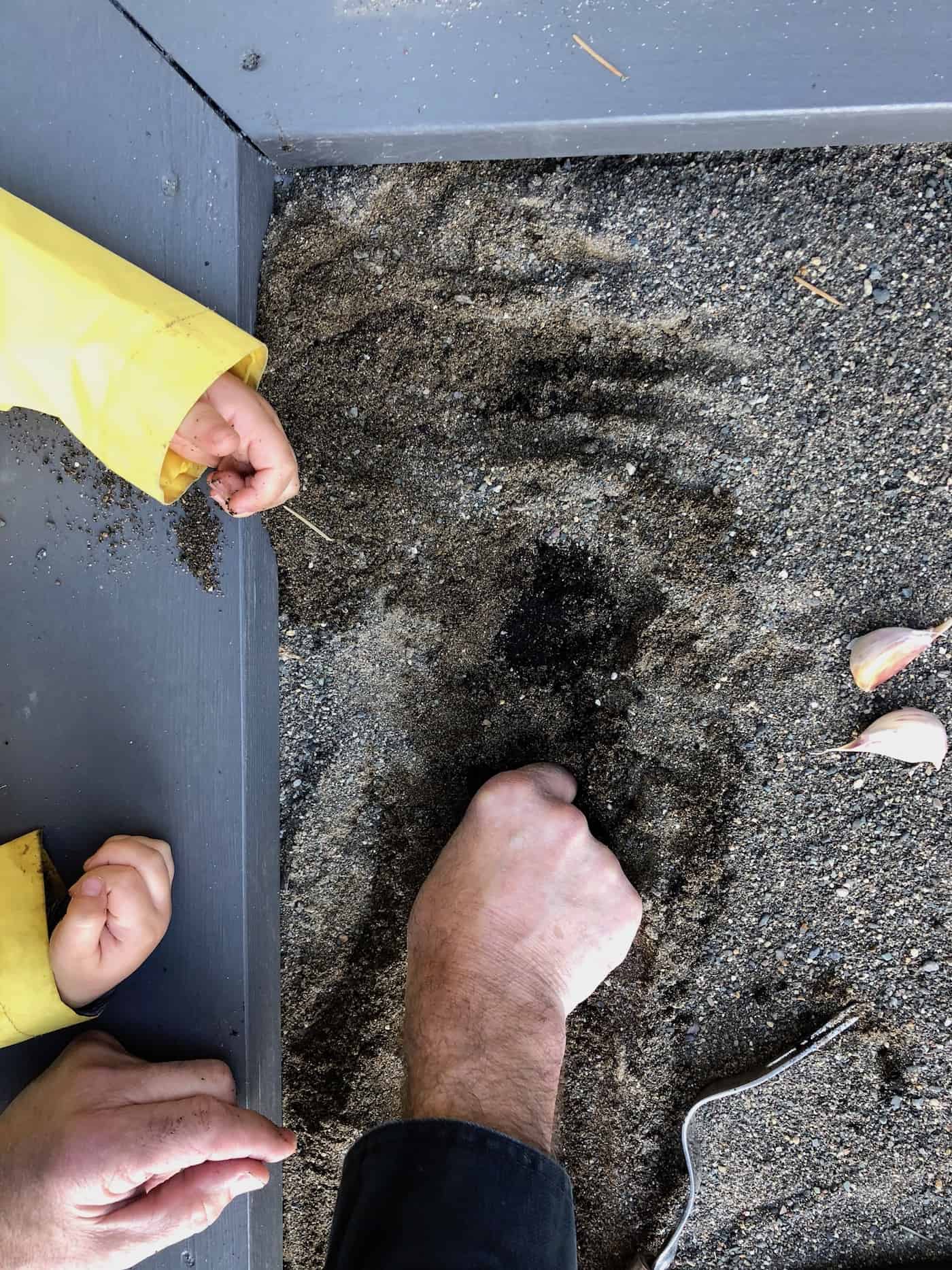
Building healthy garden soil
Building healthy garden soil becomes a much more approachable task once you understand the characteristics of ideal garden soil AND once you understand the characteristics of the existing soil in your own garden. It’s much easier to move toward a target when you know where you’re starting and where you’re going!
Getting precise about exactly which fertilizer to use is not necessarily the most effective use of your time. While nutrients are important, they shouldn’t be the sole focus of keeping your plants healthy. Soil structure, organic matter, and overall biological life are also key components of a thriving garden.
Use organic soil management methods, add some homemade compost every year, and get the soil tested now and then. To build healthy soil is to create the *groundwork* for a thriving garden. Let’s give our garden soil the respect it deserves!


